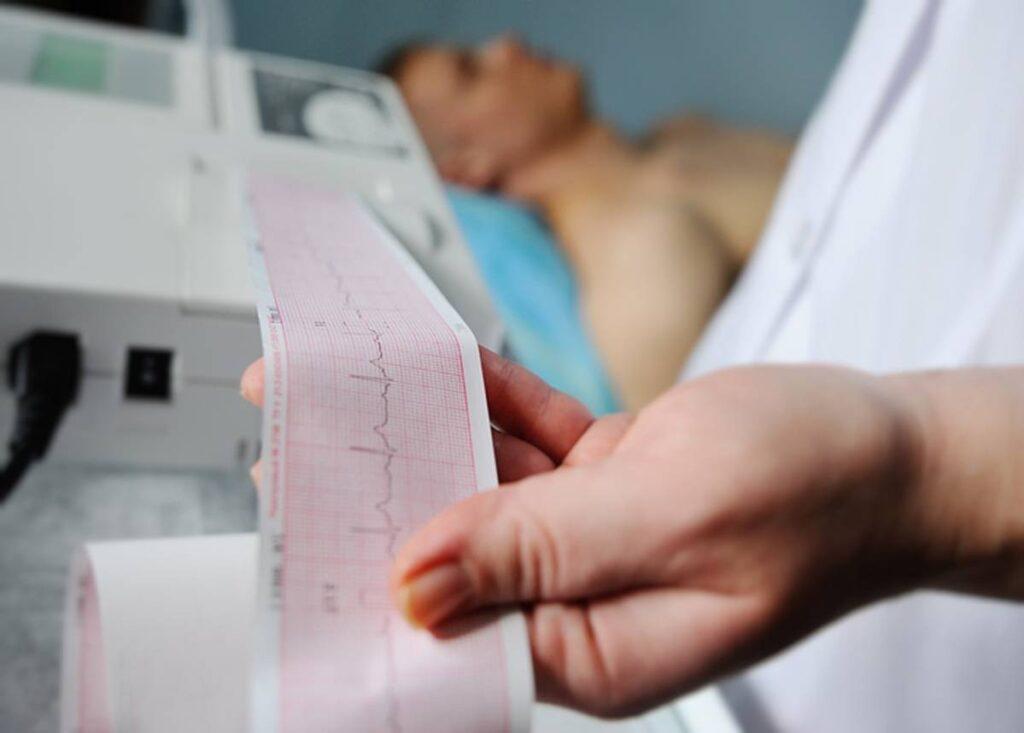Electrocardiogram (ECG) Test
Electrocardiogram (ECG) Test Center In Raipur
Saraswati Dayal’s Motiramani Heart Clinic is one of the most trusted Electrocardiogram (ECG) Test Centers in Shankar Nagar, Raipur Chhattisgarh, India.

Electrocardiogram (ECG) Test Raipur
An electrocardiogram (ECG) is a simple test that can be used to check your heart’s rhythm and electrical activity.
An electrocardiogram (ECG) is one of the simplest and fastest tests used to evaluate the heart. Electrodes (small, plastic patches that stick to the skin) are placed at certain spots on the chest, arms, and legs. The electrodes are connected to an ECG machine by lead wires. The electrical activity of the heart is then measured, interpreted, and printed out. No electricity is sent into the body.
Natural electrical impulses coordinate contractions of the different parts of the heart to keep blood flowing the way it should. An ECG records these impulses to show how fast the heart is beating, the rhythm of the heart beats (steady or irregular), and the strength and timing of the electrical impulses as they move through the different parts of the heart. Changes in an ECG can be a sign of many heart-related conditions.
Why might I need an electrocardiogram?
ECGs are quick, safe, and painless. With this test, your doctor will be able to:
- Check your heart rhythm
- See if you have poor blood flow to your heart muscle (this is called ischemia)
- Diagnose a heart attack
- Check on things that are abnormal, such as thickened heart muscle
- Detect if there are significant electrolyte abnormalities, such as high potassium or high or low calcium.
How Should I Prepare?
Some things you can do to get yourself ready:
- Avoid oily or greasy skin creams and lotions the day of the test because they can keep the electrodes from making contact with your skin.
- Avoid full-length hosiery, because electrodes need to be placed directly on your legs.
- Wear a shirt that you can remove easily to place the leads on your chest.
What Happens During an Electrocardiogram?
A technician will attach 10 electrodes with adhesive pads to the skin of your chest, arms, and legs. If you’re a guy, you may need to have your chest hair shaved to allow a better connection.
During the test you’ll lie flat while a computer creates a picture, on graph paper, of the electrical impulses that move through your heart. This is called a “resting” ECG, although the same test may be used to check your heart while you exercise.
It takes about 10 minutes to attach the electrodes and complete the test, but the actual recording takes only a few seconds.
Your doctor will keep your ECG patterns on file so that they can compare them to tests you get in the future.
What happens after an electrocardiogram?
You should be able to go back to your normal diet and activities unless your cardiologist tells you differently. Generally, there is no special care after an electrocardiogram (ECG).
Tell your cardiologist if you develop any signs or symptoms you had before the ECG (for example, chest pain, shortness of breath, dizziness, or fainting).
Your cardiologist may give you other instructions after the test, depending on your particular situation.
